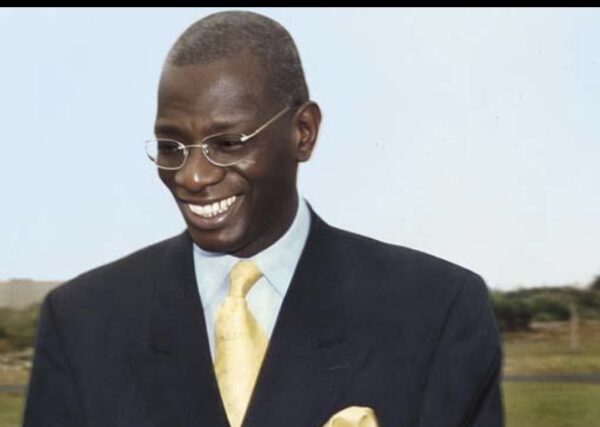By Dr El Hadji Amadou Niang,
Doctor in international law, former senior official of the Organization of African Unity and the United Nations Secretariat,
former Ambassador of Senegal, International Executive Consultant.
Africa, the cradle of humanity, finds itself today at the dawn of a truly historic turning point. In a world shaken by economic storms, social fractures, climate emergencies, technological leaps, and profound geopolitical upheavals, our continent is moving forward — propelled by the ancestral wisdom of its peoples, the power of their memories, and the promise of a destiny to shape.
As old models collapse and global balances are redrawn, Africa faces a vital imperative: to reinvent its development path while remaining true to the essence of its roots. It must no longer copy patterns designed elsewhere, but chart a sovereign, ethical, inclusive, and authentically African path. This choice is both an act of rebirth and historical justice.
Faced with persistent inequalities, fragile educational and health systems, resource plunder, and the exclusion of millions of people, the time has come to break the chains. This fight goes beyond moral duty — it is a sacred responsibility towards future generations.
The continent has undeniably demonstrated visionary capacity through strategic frameworks such as the Lagos Action Plan (1980), NEPAD (2001), and Agenda 2063 (2013), all carrying a strong pan-African vision. Yet, despite their promises, these initiatives have not led to profound structural change, hindered by externally imposed structural adjustments, financial dependency, and lack of popular ownership.
It is to address these limitations that the African Renaissance Strategy (ARS) is born today — a bold strategic framework, rooted in the truth of the continent, built on seven essential pillars, designed as the concrete foundations of a new African civilizational trajectory.
The seven pillars of the African Renaissance
1. Vital Origin: investment in human capital
The first pillar places the human being at the starting and ending point of any transformation policy. It calls for valuing the continent’s invaluable wealth — its intelligence, creativity, and resilience. It advocates for investment in education, health, training, culture, and dignity, to unleash the immense potential of youth, women, elders, and Africans in the diaspora.
2. Sovereignty over natural resources
Africa cannot build its renaissance without fully regaining control of its natural riches. Gold, oil, land, water, and minerals must stop enriching other continents. This pillar calls for ethical, sustainable, and sovereign management of resources, in service of the common good and the continent’s economic independence.
3. Energy independence and ecological transition
This pillar envisions an Africa self-sufficient in energy through innovative and sustainable choices adapted to local realities. It advocates for the promotion of renewable energies, universal access to electricity, and Africa’s role as a central player in global climate transition.
4. Sustainable and innovative industrialization
This is about indigenous industrialization based on local transformation of raw materials, the rise of agro-industry, and the development of strategic sectors such as digital, health, and biotechnology. The goal: an industry that is sustainable, ecological, and focused on the real needs of the continent.
5. Just, transparent, and inclusive governance
No true renaissance can emerge without institutional renewal. This pillar calls for protective, responsible governance that respects rights and listens to citizens. It aims to establish independent justice, end impunity, make administration transparent, and make democracy a living reality in every daily act, rooted in popular realities.
6. Rooted continental integration and active unity
The continent’s development demands a deeper and operational unity. This pillar advocates for strengthening regional integration, harmonizing public policies, supporting pan-African institutions, and materializing inter-state solidarity. A united Africa is less vulnerable, more powerful, and capable of defending its interests in a multipolar world.
7. Indigenous innovation and cultural ecology
Africa must think for itself and through its own prisms. This pillar invites drawing from traditions, languages, local know-how, and African spiritualities to forge an authentic modernity — a creativity nourished by history and oriented towards the future. This cultural ecology is the foundation of a true, fruitful, and inspiring renaissance.
Conclusion: a vision, a commitment, a collective renaissance
These seven pillars form the framework of a civilization project: rooted, clear-eyed, bold. They call for a collective mobilization of states, institutions, citizens, entrepreneurs, intellectuals, women, and youth.
The African Renaissance Strategy (ARS) is not just another document — it is a compass for a continent standing tall, a transformative vision that gives meaning, strength, and direction to Africa in the 21st century.
We make a solemn appeal to our Heads of State and Government: adopt the ARS as a continental strategy, invest in its pillars, strengthen regional cooperation, harmonize policies, and support our “vital forces” — youth, women, innovators.
And to every African citizen, we say: this renaissance is your affair.
Value our resources. Protect our land. Elevate our languages. Reinvent our future.
The time for hesitation is over.
Africa rises, elevates, and shines with a light from within.
Dr El Hadji Amadou Niang,
Doctor in international law, former senior official of the Organization of African Unity and the United Nations Secretariat,
former Ambassador of Senegal, International Executive Consultant.


